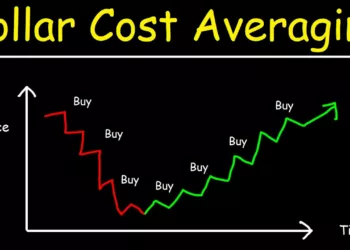The Enigmatic World of Hedge Funds
Hedge funds have long been shrouded in mystery, captivating the imagination of investors and the general public alike. These investment vehicles, often associated with astronomical returns and secretive strategies, have become synonymous with wealth and financial sophistication. However, as we peel back the layers of this complex industry, we uncover a reality that may surprise even the most seasoned investors.
In this comprehensive exploration of hedge funds, we’ll delve into the reasons behind their exclusivity, examine the controversial fee structures that benefit managers regardless of performance, and trace the evolution from classic hedge fund strategies to the cutting-edge world of quantitative and high-frequency trading. Finally, we’ll provide a step-by-step tutorial inspired by the legendary Medallion fund, offering individual investors insights into replicating some of the most successful trading strategies in history.
Why Hedge Funds Remain Off-Limits to the Average Investor
The Regulatory Landscape of Hedge Funds
One of the primary reasons hedge funds are inaccessible to the average person lies in the regulatory framework that governs them. Unlike mutual funds or exchange-traded funds (ETFs), hedge funds operate under a different set of rules that limit their investor base.
“Hedge funds are not for everyone. They are generally open only to accredited or qualified investors.” – U.S. Securities and Exchange Commission
The SEC defines an accredited investor as:
- An individual with an annual income exceeding $200,000 (or $300,000 for joint income) for the last two years, with the expectation of earning the same or a higher income in the current year.
- A person with a net worth exceeding $1 million, either individually or jointly with a spouse (excluding the value of their primary residence).
- An entity with total assets in excess of $5 million, not formed specifically to purchase the subject securities.
These stringent requirements effectively bar most retail investors from participating in hedge funds.
Minimum Investment Requirements
Even if an investor meets the accreditation criteria, many hedge funds impose high minimum investment thresholds, often ranging from $100,000 to several million dollars. This further restricts access to only the wealthiest individuals and institutional investors.
Complexity and Risk
Hedge funds often employ complex strategies that may be difficult for the average investor to understand or stomach. These can include:
- Short selling
- Leverage
- Derivatives trading
- Arbitrage
The sophisticated nature of these strategies, combined with potentially higher risk profiles, makes hedge funds unsuitable for many retail investors.
Liquidity Constraints
Unlike mutual funds or stocks, hedge funds typically have limited liquidity. Many impose lock-up periods during which investors cannot withdraw their money, sometimes lasting several years. This lack of flexibility is often incompatible with the financial needs of average investors.
The Controversial Fee Structure: How Hedge Fund Managers Profit Regardless of Performance
The “2 and 20” Model
The standard fee structure for hedge funds, known as “2 and 20,” has been a subject of intense debate within the financial industry. This model consists of:
- A 2% annual management fee based on the total assets under management (AUM)
- A 20% performance fee on profits above a certain threshold (often called the “hurdle rate”)
To illustrate the impact of this fee structure, let’s consider a hypothetical hedge fund with $1 billion in AUM:
| Performance Scenario | Fund Return | Management Fee | Performance Fee | Total Fees | Investor Return |
| Positive | 10% ($100M) | $20M | $16M | $36M | 6.4% |
| Breakeven | 2% ($20M) | $20M | $0 | $20M | 0% |
| Negative | -5% (-$50M) | $20M | $0 | $20M | -7% |
As we can see from this table, the hedge fund manager collects substantial fees even in years when the fund underperforms or loses money. This arrangement has led to criticism that the fee structure misaligns incentives between managers and investors.
High-Water Marks and Hurdle Rates
To partially address these concerns, many hedge funds have implemented high-water marks and hurdle rates:
- High-Water Mark: Ensures that performance fees are only paid on new profits, preventing managers from earning fees on the same gains multiple times.
- Hurdle Rate: Sets a minimum return threshold that must be met before performance fees kick in.
While these mechanisms provide some protection for investors, they don’t entirely solve the issue of managers profiting from fees during periods of poor performance.
The Impact on the Industry
The “heads I win, tails you lose” nature of hedge fund fee structures has had several negative consequences for the industry:
- Reduced Returns for Investors: High fees can significantly erode investor returns, especially in low-yield environments.
- Short-Term Focus: The emphasis on annual performance can lead to short-term thinking and excessive risk-taking.
- Talent Drain: The allure of high fees has drawn talent away from other areas of finance and the broader economy.
- Reputational Damage: High-profile cases of hedge funds charging exorbitant fees despite poor performance have tarnished the industry’s image.
As a result of these issues, many institutional investors and high-net-worth individuals have begun to question the value proposition of hedge funds, leading to increased scrutiny and pressure to reform fee structures.
The Evolution of Hedge Funds: From Classic Strategies to Quantitative and High-Frequency Trading
The Origins of Hedge Funds
The first hedge fund is widely attributed to Alfred Winslow Jones, who launched his fund in 1949. Jones’s innovative approach combined two key strategies:
- Leveraging long positions in undervalued stocks
- Short selling overvalued stocks
This “hedged” approach aimed to reduce market risk while capitalizing on stock-picking skills. For decades, variations of this strategy dominated the hedge fund landscape.
The Rise of Quantitative Strategies
As markets became more efficient and technology advanced, hedge funds began to explore more sophisticated approaches. The 1980s and 1990s saw the emergence of quantitative strategies, which use mathematical models and computer algorithms to identify trading opportunities.
Key factors driving this shift included:
- Increased computing power
- Availability of large datasets
- Advancements in statistical techniques and machine learning
Pioneering firms like Renaissance Technologies and D.E. Shaw led the way in developing complex quantitative models that could analyze vast amounts of data and execute trades with minimal human intervention.
The High-Frequency Trading Revolution
The early 2000s witnessed the rise of high-frequency trading (HFT), a subset of quantitative strategies that focuses on executing a large number of trades at extremely high speeds. HFT firms leverage advanced technology to:
- Analyze market data in real-time
- Identify fleeting price discrepancies
- Execute trades in milliseconds or even microseconds
The growth of HFT has been staggering. According to a report by the Tabb Group, HFT accounted for approximately 50% of U.S. equity trading volume by 2012.
Why Quantitative and High-Frequency Trading Are Considered Elite
Several factors contribute to the perception of quantitative and high-frequency trading as elite strategies:
- Technological Barriers: These strategies require significant investments in hardware, software, and data infrastructure, creating high barriers to entry.
- Intellectual Capital: Quant funds often employ teams of PhDs in mathematics, physics, and computer science, drawing from a limited pool of top talent.
- Consistent Performance: Many quantitative funds have demonstrated the ability to generate consistent returns with lower volatility than traditional strategies.
- Scalability: Algorithmic trading strategies can often handle larger amounts of capital without significantly impacting performance.
- Adaptability: Quantitative models can be quickly adjusted to changing market conditions, giving these funds an edge in dynamic environments.
Here’s a simplified comparison of traditional vs. quantitative hedge fund approaches:
| Aspect | Traditional Hedge Funds | Quantitative Hedge Funds |
| Decision Making | Human judgment | Algorithmic models |
| Analysis Speed | Hours to days | Milliseconds to seconds |
| Data Processing | Limited by human capacity | Can process vast amounts of data |
| Emotional Influence | Susceptible to bias | Emotion-free decision making |
| Strategy Consistency | May vary with market conditions | Consistent application of rules |
The perceived superiority of quantitative and high-frequency trading has led to a significant shift in the hedge fund industry, with many firms either adopting these approaches or losing assets to those that have.
The Tech Revolution: Why Smart Investors Are Embracing AI and Quantitative Methods
The Convergence of Finance and Technology
The finance industry has always been at the forefront of technological adoption, but recent years have seen an unprecedented convergence of finance, technology, and data science. Smart investors are increasingly recognizing the potential of combining artificial intelligence, advanced software, cutting-edge hardware, and quantitative methods to gain a competitive edge in the markets.
Key Advantages of Tech-Driven Investing
- Data Processing Capabilities: AI and machine learning algorithms can analyze vast amounts of structured and unstructured data, uncovering patterns and insights that human analysts might miss.
- Speed and Efficiency: Automated trading systems can execute trades far faster than human traders, capitalizing on fleeting market inefficiencies.
- Emotional Neutrality: AI-driven systems are not subject to the cognitive biases and emotional decision-making that can plague human investors.
- Continuous Learning: Machine learning models can continuously adapt to changing market conditions, potentially improving performance over time.
- Scalability: Tech-driven strategies can often handle larger amounts of capital without significant degradation in performance.
The Role of Hardware in Modern Trading
Advanced hardware plays a crucial role in the success of tech-driven trading strategies. Key components include:
- High-Performance Computers: Powerful processors capable of running complex algorithms in real-time.
- Low-Latency Networks: Ultra-fast connections that minimize the time between signal generation and trade execution.
- Field-Programmable Gate Arrays (FPGAs): Specialized chips that can be programmed to perform specific tasks with extreme speed and efficiency.
The AI Revolution in Finance
Artificial Intelligence is transforming various aspects of the investment process:
- Natural Language Processing (NLP): AI systems can analyze news articles, social media posts, and company reports to gauge market sentiment and identify potential trading signals.
- Machine Learning for Risk Management: Advanced algorithms can assess and manage risk across complex portfolios in real-time.
- Predictive Analytics: AI models can forecast market trends and asset prices with increasing accuracy.
“AI is a fundamental risk to the existence of human civilization.” – Elon Musk
While this quote highlights potential concerns about AI, in the context of finance, it underscores the transformative power of the technology and why investors are racing to harness its potential.
The Quantitative Edge
Quantitative methods provide a rigorous, data-driven approach to investing that complements AI technologies:
- Statistical Arbitrage: Identifying and exploiting price discrepancies between related securities.
- Factor Investing: Systematically targeting specific drivers of returns across asset classes.
- Portfolio Optimization: Using advanced mathematical techniques to construct portfolios that maximize returns for a given level of risk.
The Future of Tech-Driven Investing
As technology continues to advance, we can expect to see:
- Increased Adoption of AI and Machine Learning: More firms will incorporate these technologies into their investment processes.
- Greater Emphasis on Alternative Data: Investors will seek out novel data sources to gain unique insights.
- Democratization of Quantitative Strategies: Advanced trading techniques will become more accessible to retail investors through user-friendly platforms and APIs.
By embracing the combination of AI, software, hardware, and quantitative methods, smart investors are positioning themselves at the forefront of a technological revolution in finance.
Tutorial: Mimicking Renaissance Technologies’s Medallion Fund for Individual Investors
Renaissance Technologies’ Medallion Fund is renowned for its exceptional performance, averaging annual returns of 66% before fees over a 30-year period from 1988 to 2018. While it’s impossible for individual investors to replicate the fund’s exact strategies due to their complexity and the proprietary nature of the algorithms, we can draw inspiration from their approach to create a simplified trading system.
Step 1: Understand the Basics of Quantitative Trading
Before diving into strategy development, familiarize yourself with key concepts:
- Statistical analysis
- Time series analysis
- Machine learning fundamentals
- Programming (Python or R are popular choices)
Quantopian offers free educational resources on quantitative finance.
Step 2: Collect and Clean Data
Gather historical price data for a diverse set of liquid assets (e.g., stocks, ETFs, futures). Ensure your data is clean and free of errors.
pythonCopyimport pandas as pd
import yfinance as yf
# Download historical data for S&P 500 stocks
sp500 = pd.read_html('https://en.wikipedia.org/wiki/List_of_S%26P_500_companies')[0]
tickers = sp500['Symbol'].tolist()
data = yf.download(tickers, start="2010-01-01", end="2023-12-31")Step 3: Develop a Multi-Strategy Approach
Medallion’s success is partly attributed to its use of multiple, uncorrelated strategies. Consider implementing:
- Trend-following
- Mean reversion
- Statistical arbitrage
- Event-driven strategies
Here’s a simple example of a mean reversion strategy:
pythonCopydef mean_reversion_signal(price, window=20, threshold=2):
rolling_mean = price.rolling(window=window).mean()
rolling_std = price.rolling(window=window).std()
z_score = (price - rolling_mean) / rolling_std
buy_signal = z_score < -threshold
sell_signal = z_score > threshold
return buy_signal, sell_signalStep 4: Implement Risk Management
Proper risk management is crucial. Consider:
- Position sizing based on volatility
- Stop-loss orders
- Portfolio-level risk controls
pythonCopydef position_size(price, volatility, risk_per_trade=0.01):
return risk_per_trade / volatilityStep 5: Backtest Your Strategies
Use historical data to test your strategies’ performance. Be wary of overfitting and use out-of-sample testing.
pythonCopyfrom backtesting import Backtest, Strategy
class MeanReversionStrategy(Strategy):
def init(self):
self.ma = self.I(lambda: self.data.Close.rolling(20).mean())
self.std = self.I(lambda: self.data.Close.rolling(20).std())
def next(self):
if (self.data.Close[-1] - self.ma[-1]) / self.std[-1] < -2:
self.buy()
elif (self.data.Close[-1] - self.ma[-1]) / self.std[-1] > 2:
self.sell()
bt = Backtest(data, MeanReversionStrategy, cash=10000, commission=.002)
results = bt.run()
print(results)Step 6: Optimize and Refine
Use techniques like cross-validation and walk-forward optimization to improve your strategies without overfitting.
Step 7: Implement Real-Time Trading
Once you’re satisfied with your backtested results, set up a system for real-time trading. Consider using APIs provided by brokers like Interactive Brokers or Alpaca.
Step 8: Monitor and Adapt
Continuously monitor your strategy’s performance and be prepared to adapt to changing market conditions.
Remember, while this tutorial provides a starting point, successful quantitative trading requires ongoing research, development, and risk management. Always invest responsibly and within your risk tolerance.
The Future of Hedge Funds and Quantitative Investing
As we’ve explored in this comprehensive look at hedge funds, the industry has undergone significant transformation since its inception. From the exclusive world of traditional hedge funds to the tech-driven realm of quantitative and high-frequency trading, the landscape continues to evolve at a rapid pace.
The challenges faced by classic hedge fund models, including controversial fee structures and limited accessibility, have paved the way for more transparent and efficient approaches. The rise of quantitative strategies and the integration of artificial intelligence have democratized aspects of sophisticated investing, allowing a broader range of investors to access advanced trading techniques.
However, as technology continues to advance and markets become increasingly efficient, the hedge fund industry faces both opportunities and challenges. Here are some key trends and considerations for the future:
1. Democratization of Quantitative Strategies
As we’ve seen in our tutorial on mimicking the Medallion fund, some aspects of quantitative investing are becoming more accessible to individual investors. This trend is likely to continue, with more user-friendly platforms and tools emerging to bridge the gap between institutional and retail investors.
2. Increased Regulatory Scrutiny
The exclusive nature of hedge funds and their sometimes opaque operations have drawn attention from regulators. We can expect increased oversight in the coming years, potentially leading to more transparency and changes in fee structures.
3. Adaptation of Traditional Hedge Funds
Many traditional hedge funds are recognizing the need to evolve. We’re likely to see more hybrid models that combine human expertise with quantitative techniques, aiming to leverage the strengths of both approaches.
4. The AI Arms Race
As artificial intelligence becomes more sophisticated, hedge funds will likely engage in an “AI arms race,” competing to develop the most advanced algorithms and predictive models. This could lead to significant advancements in financial technology but also raise concerns about market stability and fairness.
5. Focus on Alternative Data
The quest for alpha will drive hedge funds to explore increasingly diverse and unconventional data sources. From satellite imagery to social media sentiment analysis, the definition of financial data will continue to expand.
6. Sustainability and ESG Integration
Environmental, Social, and Governance (ESG) factors are becoming increasingly important to investors. Hedge funds will need to adapt by incorporating ESG considerations into their strategies and offering more sustainable investment options.
7. Cybersecurity Challenges
As hedge funds become more reliant on technology, cybersecurity will be a critical concern. Protecting proprietary algorithms and sensitive financial data will be paramount.
“The future of finance is digital. Those who resist change will be left behind.” – Jamie Dimon, CEO of JPMorgan Chase
This quote underscores the imperative for hedge funds and investors alike to embrace technological advancements and adapt to the changing landscape.
Final Thoughts
The hedge fund industry has come a long way from its roots in Alfred Winslow Jones’s innovative long-short strategy. While the exclusive nature of traditional hedge funds has been a barrier for many investors, the rise of quantitative strategies and technological advancements are reshaping the industry.
For individual investors, the key takeaways are:
- Stay informed about technological advancements in finance.
- Consider incorporating quantitative elements into your investment strategy.
- Be cautious of high fees and opaque investment structures.
- Continuously educate yourself on new investment techniques and tools.
- Remember that even the most sophisticated strategies carry risks – always invest within your risk tolerance.
As we look to the future, it’s clear that the line between hedge funds and other investment vehicles will continue to blur. The most successful investors – whether institutions or individuals – will be those who can effectively harness technology, data, and quantitative methods while maintaining a clear understanding of market fundamentals and risk management.
The world of hedge funds and quantitative investing is complex and ever-evolving. By staying informed and adaptable, investors can position themselves to take advantage of new opportunities as they arise in this exciting and challenging financial landscape.
For those interested in delving deeper into the world of quantitative finance and hedge fund strategies, consider exploring resources from organizations like the CFA Institute or academic programs in financial engineering. Remember, successful investing is a journey of continuous learning and adaptation.
For more content, check out The Astonishing Rise and Controversial Legacy of Hedge Funds: A Financial Revolution.
Disclaimer: The information provided in this blog post is for educational and informational purposes only. It should not be construed as financial advice or a recommendation to invest in any particular financial instrument or strategy. The content is based on general knowledge and publicly available information about hedge funds and quantitative investing strategies.
Investing in financial markets carries inherent risks, and past performance is not indicative of future results. The strategies and techniques discussed in this article, particularly those related to quantitative and algorithmic trading, can be highly complex and may not be suitable for all investors.
The example code provided in the tutorial section is simplified for illustrative purposes and should not be used for actual trading without thorough testing and risk assessment. Real-world implementation of trading strategies requires extensive knowledge, experience, and careful consideration of individual financial circumstances and risk tolerance.
Readers are strongly advised to conduct their own research, seek professional financial advice, and carefully consider their investment objectives and risk tolerance before making any investment decisions. The author and publisher of this blog post are not responsible for any financial losses or damages resulting from actions taken based on the information provided herein.
Remember that hedge funds and certain investment strategies mentioned in this article may not be accessible to all investors due to regulatory restrictions and high minimum investment requirements. Always ensure that you comply with all applicable laws and regulations in your jurisdiction when considering any investment strategy.
By reading and using the information in this blog post, you acknowledge and agree to the terms of this disclaimer.

















































